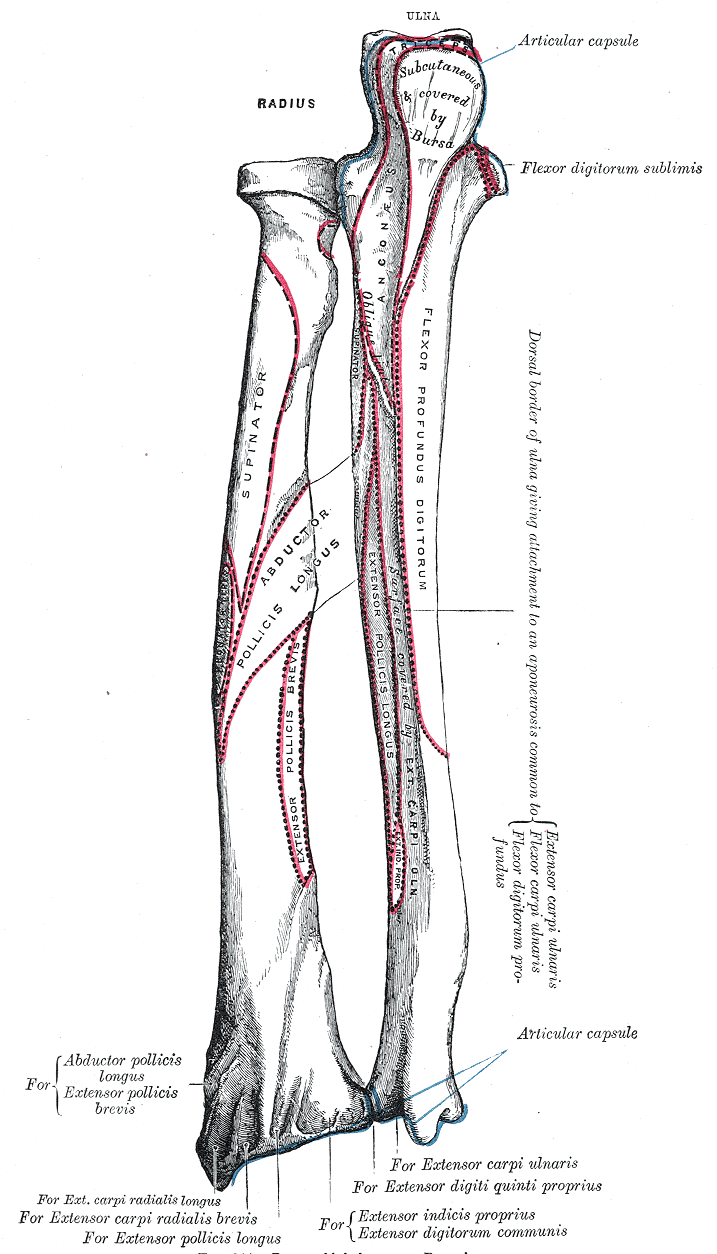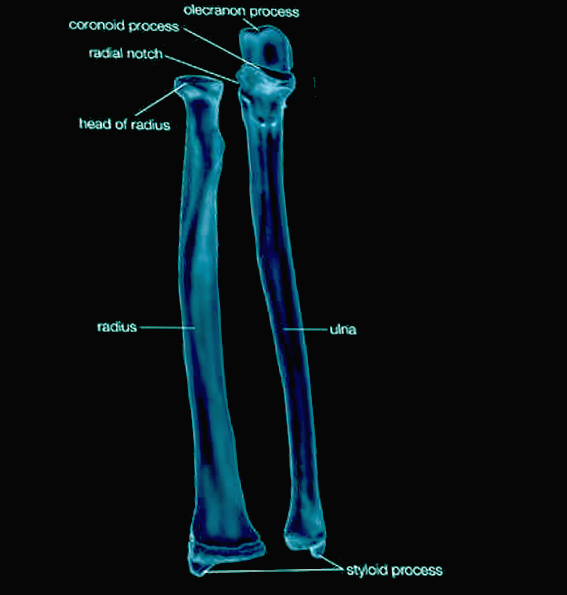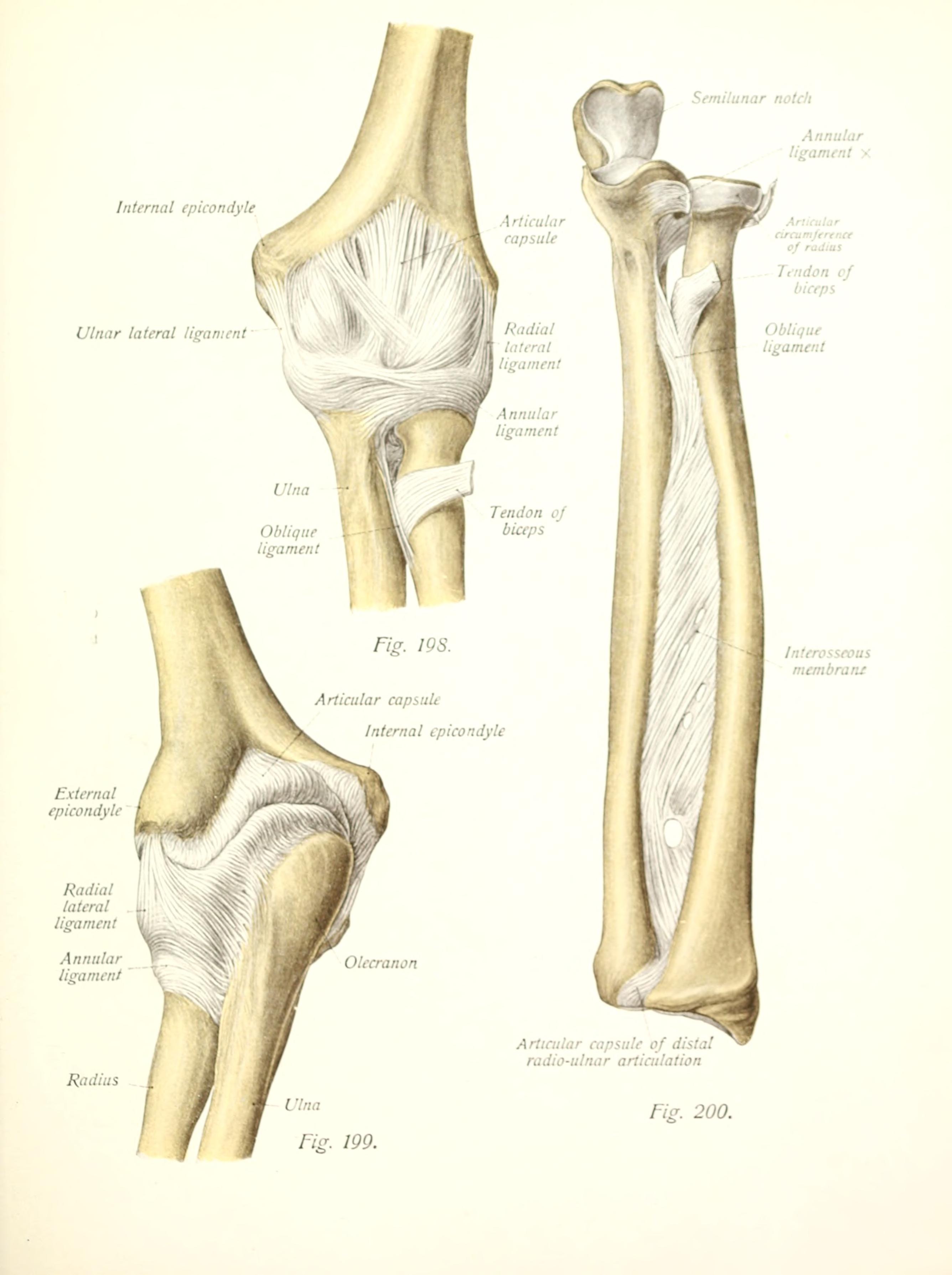[5]
Fliegel BE, Ekblad J, Varacallo M. Anatomy, Shoulder and Upper Limb, Elbow Annular Ligament. StatPearls. 2023 Jan:():
[PubMed PMID: 30860729]
[6]
Mostafa E, Imonugo O, Varacallo M. Anatomy, Shoulder and Upper Limb, Humerus. StatPearls. 2023 Jan:():
[PubMed PMID: 30521242]
[8]
Kerkhof FD, van Leeuwen T, Vereecke EE. The digital human forearm and hand. Journal of anatomy. 2018 Nov:233(5):557-566. doi: 10.1111/joa.12877. Epub 2018 Sep 17
[PubMed PMID: 30225930]
[10]
Moritomo H. The distal interosseous membrane: current concepts in wrist anatomy and biomechanics. The Journal of hand surgery. 2012 Jul:37(7):1501-7. doi: 10.1016/j.jhsa.2012.04.037. Epub
[PubMed PMID: 22721462]
[11]
Al-Qattan MM, Kozin SH. Update on embryology of the upper limb. The Journal of hand surgery. 2013 Sep:38(9):1835-44. doi: 10.1016/j.jhsa.2013.03.018. Epub 2013 May 17
[PubMed PMID: 23684522]
[12]
Cole P, Kaufman Y, Hatef DA, Hollier LH Jr. Embryology of the hand and upper extremity. The Journal of craniofacial surgery. 2009 Jul:20(4):992-5. doi: 10.1097/SCS.0b013e3181abb18e. Epub
[PubMed PMID: 19553860]
[13]
Little JT, Klionsky NB, Chaturvedi A, Soral A, Chaturvedi A. Pediatric distal forearm and wrist injury: an imaging review. Radiographics : a review publication of the Radiological Society of North America, Inc. 2014 Mar-Apr:34(2):472-90. doi: 10.1148/rg.342135073. Epub
[PubMed PMID: 24617692]
[14]
Kinose S, Kanaya Y, Kawasaki Y, Okamura T, Kato K, Sakai T, Ichimura K. Anatomic characterization of the radial and ulnar nutrient arteries in humans. Annals of anatomy = Anatomischer Anzeiger : official organ of the Anatomische Gesellschaft. 2018 Mar:216():23-28. doi: 10.1016/j.aanat.2017.10.004. Epub 2017 Nov 21
[PubMed PMID: 29169842]
[15]
Giebel GD, Meyer C, Koebke J, Giebel G. Arterial supply of forearm bones and its importance for the operative treatment of fractures. Surgical and radiologic anatomy : SRA. 1997:19(3):149-53
[PubMed PMID: 9381315]
[16]
Edwards JR, Williams K, Kindblom LG, Meis-Kindblom JM, Hogendoorn PC, Hughes D, Forsyth RG, Jackson D, Athanasou NA. Lymphatics and bone. Human pathology. 2008 Jan:39(1):49-55
[PubMed PMID: 17904616]
[21]
Bayot ML, Nassereddin A, Varacallo M. Anatomy, Shoulder and Upper Limb, Brachial Plexus. StatPearls. 2023 Jan:():
[PubMed PMID: 29763192]
[23]
Forro SD, Munjal A, Lowe JB. Anatomy, Shoulder and Upper Limb, Arm Structure and Function. StatPearls. 2023 Jan:():
[PubMed PMID: 29939618]
[24]
Tiwana MS, Charlick M, Varacallo M. Anatomy, Shoulder and Upper Limb, Biceps Muscle. StatPearls. 2023 Jan:():
[PubMed PMID: 30137823]
[25]
Klausmeyer MA, Mudgal C. Exposure of the forearm and distal radius. Hand clinics. 2014 Nov:30(4):427-33, v. doi: 10.1016/j.hcl.2014.07.002. Epub 2014 Aug 23
[PubMed PMID: 25440071]
[27]
Solomon BD. VACTERL/VATER Association. Orphanet journal of rare diseases. 2011 Aug 16:6():56. doi: 10.1186/1750-1172-6-56. Epub 2011 Aug 16
[PubMed PMID: 21846383]
[28]
Catalano LW 3rd, Zlotolow DA, Hitchcock PB, Shah SN, Barron OA. Surgical exposures of the radius and ulna. The Journal of the American Academy of Orthopaedic Surgeons. 2011 Jul:19(7):430-8
[PubMed PMID: 21724922]
[29]
Jockel CR, Zlotolow DA, Butler RB, Becker EH. Extensile surgical exposures of the radius: a comparative anatomic study. The Journal of hand surgery. 2013 Apr:38(4):745-52. doi: 10.1016/j.jhsa.2012.12.029. Epub 2013 Feb 16
[PubMed PMID: 23419709]
Level 2 (mid-level) evidence
[30]
Reilly TJ. Isolated and combined fractures of the diaphysis of the radius and ulna. Hand clinics. 2002 Feb:18(1):179-94
[PubMed PMID: 12143414]
[31]
Rehim SA, Maynard MA, Sebastin SJ, Chung KC. Monteggia fracture dislocations: a historical review. The Journal of hand surgery. 2014 Jul:39(7):1384-94. doi: 10.1016/j.jhsa.2014.02.024. Epub 2014 May 3
[PubMed PMID: 24792923]
[32]
Szymanski JA, Reeves RA, Taqi M, Carter KR. Barton Fracture. StatPearls. 2023 Jan:():
[PubMed PMID: 29763081]
Level 2 (mid-level) evidence
[33]
Guss MS, Rettig ME. The Essex-Lopresti Injury. Bulletin of the Hospital for Joint Disease (2013). 2019 Mar:77(1):33-38
[PubMed PMID: 30865862]
[34]
Andreotti M, Tonon F, Caruso G, Massari L, Riva MA. The "Chauffeur Fracture": Historical Origins of an Often-Forgotten Eponym. Hand (New York, N.Y.). 2020 Mar:15(2):252-254. doi: 10.1177/1558944718792650. Epub 2018 Aug 6
[PubMed PMID: 30079762]
[35]
Pountos I, Clegg J, Siddiqui A. Diagnosis and treatment of greenstick and torus fractures of the distal radius in children: a prospective randomised single blind study. Journal of children's orthopaedics. 2010 Aug:4(4):321-6. doi: 10.1007/s11832-010-0269-3. Epub 2010 Jul 2
[PubMed PMID: 21804894]
Level 1 (high-level) evidence
[36]
Handoll HH, Elliott J, Iheozor-Ejiofor Z, Hunter J, Karantana A. Interventions for treating wrist fractures in children. The Cochrane database of systematic reviews. 2018 Dec 19:12(12):CD012470. doi: 10.1002/14651858.CD012470.pub2. Epub 2018 Dec 19
[PubMed PMID: 30566764]
Level 1 (high-level) evidence



